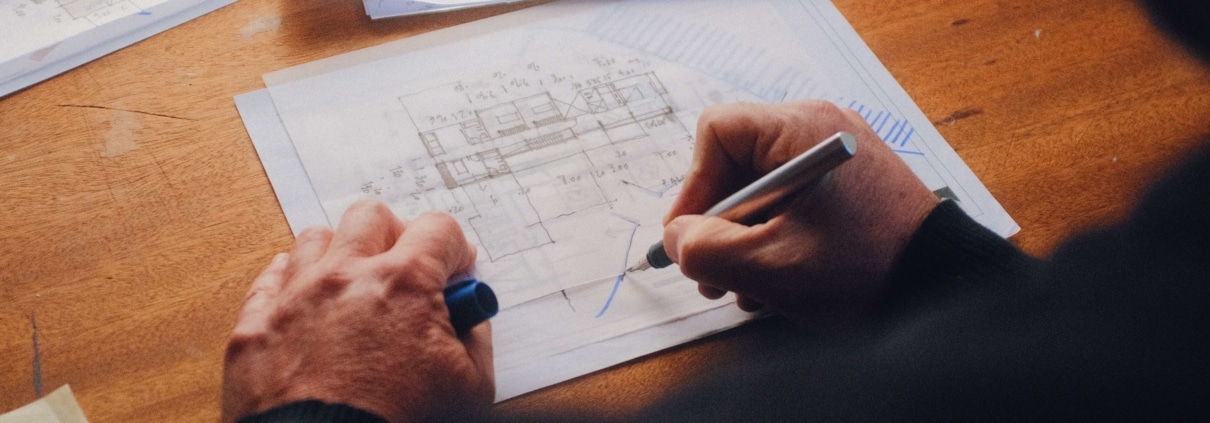Zinc: The Choice for Architects
From centuries-old roofs and decorative features in Europe, to ultra-modernist construction projects around the world, zinc has long held a reputation as a top-caliber architectural metal. Although its popularity has only begun to fully take off in the last few decades, zinc’s presence in global architecture is on the rise, and will only continue to trend upwards.
This increasing popularity is hardly surprising given all the attractive traits that zinc possesses. In order to fully explore why zinc is indeed the top choice for architects, this article will examine the metal’s most important benefits, as well as highlighting several case studies of already successful projects that have utilized zinc.
Why Choose Zinc?
Durability
Due to the patina that zinc naturally forms, the metal is extremely durable, able to last up to a century without needing to be replaced. Some of the earliest uses of architectural zinc can be found in roofs, statues, and decorative elements of buildings in European countries that were originally installed in the 18th century, and some modern roofs in these countries are more than 100 years old.
In addition, zinc requires very little maintenance. Its protective patina will “self-heal” minor scratches and damage by itself. The patina is also antimicrobial, rendering the metal resistant to mold and fungus. All in all, this makes zinc ideal for a vast array of different climates.
Sustainability
Zinc is one of the more ecologically friendly metal options – it’s the 24th most common metal found on Earth, is nearly infinitely recyclable, and requires less energy to smelt and process than aluminum, copper, or steel.
Flexibility
Lastly, zinc is flexible, both figuratively and literally. In roofing, it can be pitched anywhere between 5 and 90 degrees, and the low thickness of zinc sheet allows it to be curved or bent at nearly any angle, allowing zinc to be molded into almost any shape.
This means that zinc can not only be used for elaborate and ultra-modern roofs, it can also be used to envelop the entire outer structure of a building, able to accommodate complex, flowing designs and even able to display images via carefully perforated zinc sheets.
Noteworthy Architectural Zinc
Rather than further discuss zinc’s virtues in the abstract, we want to take the time to see specific examples of how zinc has specifically been leveraged in the real world to create designs that are both beautiful and highly practical.
Ga on Jai – Gwangmyeong, Korea
The zinc roof on the Ga on Jai house is a perfect demonstration of zinc’s flexibility – physically flexible as demonstrated by the flowing, cantilevered slopes of the roof’s structure, and aesthetically flexible as traditional design and modern sensibilities are united into a single, attractive structure.
Here zinc is used to create a roof that creates an intimate, privacy-minded home that is also highly resistant to the rough weather that can occur in the area.
Municipal Technical Centre – Rixheim, France
This municipal theater in France meets local architectural styles while still striking a unique and imposing profile in a rural area. It was constructed with sustainability in mind, the architect ultimately chose a single building rather than several close-by units in order to maximize efficiency. Unifying the whole structure under the distinctive zig-zag zinc roof allowed it to not only save on initial construction costs, but will continue to offer green benefits with much lower heating and maintenance costs.
Godson Street – London, United Kingdom
The goal of the development at Godson Street was to create a mixed-use building able to hold both residential and commercial spaces while maintaining a unique visual identity to express stakeholder’s individuality.
The outer zinc envelope comes in varying colors, presenting a face that is at once unique and eye-catching while still maintaining a refined, classy, modern look. The possibilities of the zinc envelope have been taken advantage of to create windows and lightwells in unusual, nontraditional shapes.
Concert Hall – Ostrava, Czech Republic
Our final stop is an upcoming project still not completed – this incredible concert hall. Once again a thoroughly unique design is presented in the completely rounded edges of the outer structure – merged with large glass windows at either end, the building will offer both a unique social experience in its modern lobbies and a unique acoustic experience in its rounded concert hall.
Making the Most of Zinc
As we’ve seen here, the possibilities for zinc in modern construction are already being deeply explored around the world, and there can be no doubt that this trend will only continue and increase as time goes on. However, none of these projects could have been realized without reliable, top-quality production and manufacturing of zinc sheet.
Every architect knows that trusting in inferior products and services is ultimately a road to disaster, and that finding the most reliable providers is a key step to completing any project. That’s where MetalTech Global comes in. We are the nation’s largest stocking center of architectural zinc, and can offer our clients not only custom zinc fabrication, but years of experience and a host of satisfied past clients and projects. Contact us today to find out how we can bring your next project to life.



